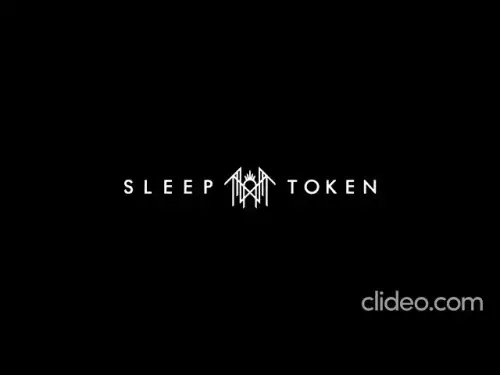-
 Bitcoin
Bitcoin $113200
1.54% -
 Ethereum
Ethereum $4368
1.43% -
 XRP
XRP $3.022
4.23% -
 Tether USDt
Tether USDt $0.0000
-0.01% -
 BNB
BNB $883.5
0.92% -
 Solana
Solana $219.5
5.29% -
 USDC
USDC $0.9997
-0.02% -
 Dogecoin
Dogecoin $0.2411
3.66% -
 Cardano
Cardano $0.8908
5.48% -
 TRON
TRON $0.3349
0.94% -
 Hyperliquid
Hyperliquid $54.50
8.93% -
 Chainlink
Chainlink $23.73
5.54% -
 Ethena USDe
Ethena USDe $1.001
-0.01% -
 Sui
Sui $3.602
5.47% -
 Stellar
Stellar $0.3861
5.90% -
 Bitcoin Cash
Bitcoin Cash $585.1
-1.13% -
 Avalanche
Avalanche $26.09
4.37% -
 Hedera
Hedera $0.2325
5.06% -
 UNUS SED LEO
UNUS SED LEO $9.549
-0.23% -
 Litecoin
Litecoin $114.2
1.13% -
 Cronos
Cronos $0.2502
-2.95% -
 Toncoin
Toncoin $3.134
1.24% -
 Shiba Inu
Shiba Inu $0.00001307
4.10% -
 Polkadot
Polkadot $4.148
3.50% -
 Uniswap
Uniswap $9.759
3.47% -
 Ethena
Ethena $0.8495
11.24% -
 World Liberty Financial
World Liberty Financial $0.2188
3.76% -
 Dai
Dai $0.9997
-0.03% -
 Monero
Monero $271.7
0.21% -
 Aave
Aave $309.2
2.95%
How to set up a hardware wallet?
A hardware wallet securely stores private keys offline, protecting your crypto from online threats and ensuring full control over your digital assets.
Sep 03, 2025 at 05:55 am
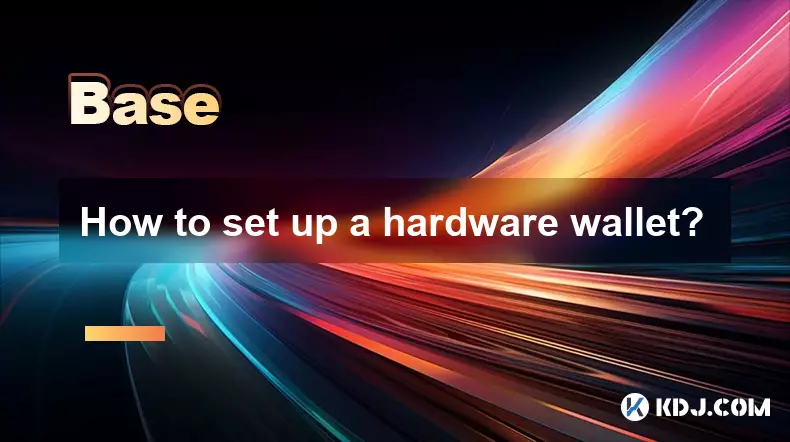
Understanding the Importance of Hardware Wallets
1. A hardware wallet is a physical device designed to securely store private keys offline, protecting them from online threats such as hacking and malware.
2. Unlike software wallets that reside on internet-connected devices, hardware wallets keep private keys isolated in a secure chip, making them significantly more resistant to cyberattacks.
3. These wallets support multiple cryptocurrencies, allowing users to manage Bitcoin, Ethereum, and various ERC-20 tokens from a single interface.
4. They interact with blockchain networks through companion software, enabling transaction signing without exposing private keys to the internet.
Setting up a hardware wallet correctly ensures that your digital assets remain under your control and are safeguarded against unauthorized access.Step-by-Step Setup Process
1. Unbox the hardware wallet and verify its authenticity by checking the packaging and serial number against the manufacturer’s website.
2. Connect the device to your computer using the provided USB cable and navigate to the official wallet provider’s website to download the latest version of the software interface.
3. Follow the on-screen instructions to initialize the device, selecting the option to create a new wallet during setup.
4. The device will generate a recovery seed—typically 12, 18, or 24 words—and display it on its screen. Write down each word in the correct order on the included recovery card.
Never store the seed digitally—doing so increases the risk of theft. Keep the written copy in a secure physical location, such as a fireproof safe.Configuring Security Features
1. Set a strong PIN code directly on the hardware wallet. This PIN is required every time the device is accessed and is not stored anywhere else.
2. Avoid using predictable patterns or sequences. The device will wipe itself after multiple incorrect attempts, adding another layer of protection.
3. Enable passphrase support if available. This feature adds an extra word or phrase to your recovery seed, effectively creating a hidden wallet that cannot be accessed without the additional passphrase.
4. Test the recovery process by restoring the wallet on a second device using only the seed phrase to confirm accuracy and reliability.
A properly configured passphrase can act as a decoy, allowing users to reveal a less valuable wallet under duress while protecting the primary assets.Connecting and Managing Cryptocurrencies
1. Install the official wallet application associated with your hardware device, such as Ledger Live or Trezor Suite, ensuring it is downloaded from the verified source.
2. Connect the hardware wallet to the application and verify the device name and connection status within the interface.
3. Add the cryptocurrencies you wish to manage by selecting them in the app and generating receiving addresses directly from the hardware device screen.
4. When sending funds, initiate the transaction in the software, confirm the recipient address and amount on the hardware wallet’s display, then approve using the physical buttons.
Always double-check transaction details on the device’s screen, as malware could potentially alter addresses in the software interface.Frequently Asked Questions
What should I do if I lose my hardware wallet?As long as you have your recovery seed, you can restore your funds on another compatible hardware or software wallet. The seed grants full access to your private keys, so its security is critical.
Can I use one hardware wallet for multiple blockchains?Yes, most modern hardware wallets support a wide range of blockchains and tokens through the same device. The wallet interface allows you to switch between networks and manage different assets securely.
Is it safe to buy a used hardware wallet?No, purchasing a used hardware wallet is highly risky. The device may have been tampered with, and the recovery seed could already be compromised, giving someone else access to your funds.
What happens if my hardware wallet gets damaged?Physical damage does not result in permanent loss of funds if you have the recovery seed. You can use the seed to restore your wallet on a new device, ensuring your assets remain accessible.
Disclaimer:info@kdj.com
The information provided is not trading advice. kdj.com does not assume any responsibility for any investments made based on the information provided in this article. Cryptocurrencies are highly volatile and it is highly recommended that you invest with caution after thorough research!
If you believe that the content used on this website infringes your copyright, please contact us immediately (info@kdj.com) and we will delete it promptly.
- Aethir Price Check: Smart Money Bails, Correction Ahead?
- 2025-09-09 16:25:13
- Canary ETF, Staked SEI, and SEC Filings: A New York Minute on Crypto's Next Big Thing
- 2025-09-09 16:45:16
- Bitcoin Price, Rollblock, and the 30x Growth Potential: What's the Buzz?
- 2025-09-09 17:05:15
- Nasdaq and Tokenized Securities: Trading's Next Frontier
- 2025-09-09 16:45:16
- Tom Lee's Bold Bitcoin Prediction: $200,000 by 2025?
- 2025-09-09 16:25:13
- USDH Stablecoin: Sky's Bold Move for DeFi Dominance with 4.85% Yield
- 2025-09-09 16:50:12
Related knowledge

What is social recovery for wallets?
Sep 09,2025 at 09:54am
Understanding Social Recovery in Cryptocurrency Wallets1. Social recovery is a security mechanism designed to help users regain access to their crypto...
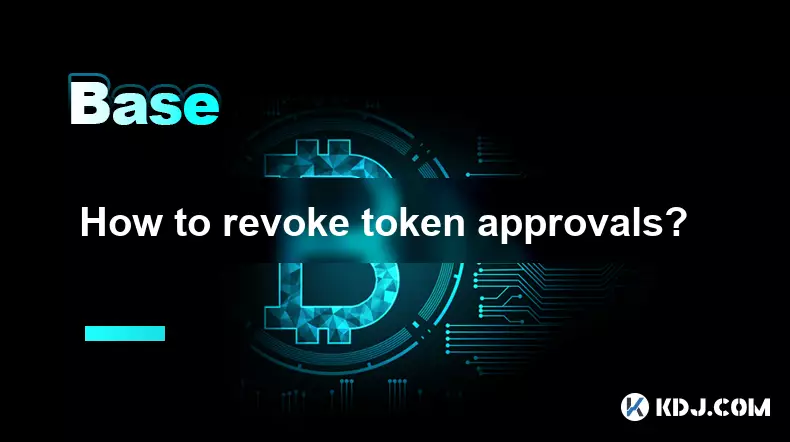
How to revoke token approvals?
Sep 09,2025 at 12:18am
Understanding Token Approvals in the Crypto Ecosystem1. Token approvals are a foundational component of blockchain interactions, especially within dec...
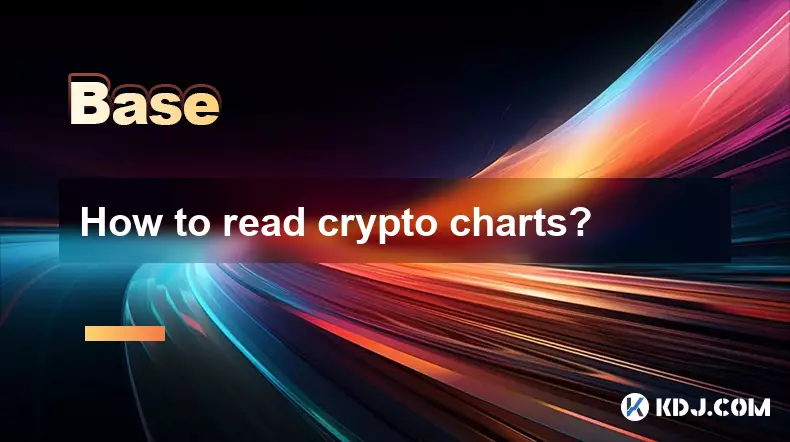
How to read crypto charts?
Sep 08,2025 at 11:36pm
Understanding the Basics of Crypto Chart Types1. The most common chart type used in cryptocurrency trading is the candlestick chart. Each candlestick ...

What are Real World Assets (RWA)?
Sep 09,2025 at 06:37am
Understanding Real World Assets in the Cryptocurrency Ecosystem1. Real World Assets, commonly referred to as RWA, represent physical or traditional fi...
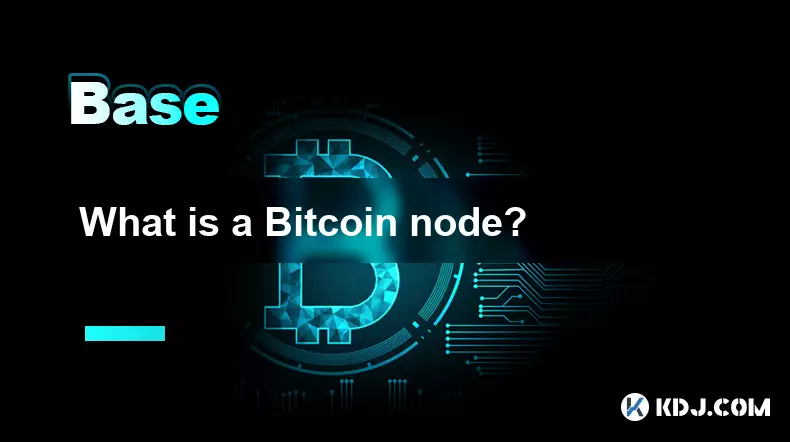
What is a Bitcoin node?
Sep 09,2025 at 03:37pm
Running a Bitcoin node empowers users to independently verify transactions and enforce network rules without relying on third parties. Understanding t...

What is technical analysis in crypto?
Sep 09,2025 at 07:18am
Understanding Technical Analysis in the Crypto Market1. Technical analysis in the cryptocurrency market involves evaluating past price movements and t...

What is social recovery for wallets?
Sep 09,2025 at 09:54am
Understanding Social Recovery in Cryptocurrency Wallets1. Social recovery is a security mechanism designed to help users regain access to their crypto...

How to revoke token approvals?
Sep 09,2025 at 12:18am
Understanding Token Approvals in the Crypto Ecosystem1. Token approvals are a foundational component of blockchain interactions, especially within dec...

How to read crypto charts?
Sep 08,2025 at 11:36pm
Understanding the Basics of Crypto Chart Types1. The most common chart type used in cryptocurrency trading is the candlestick chart. Each candlestick ...

What are Real World Assets (RWA)?
Sep 09,2025 at 06:37am
Understanding Real World Assets in the Cryptocurrency Ecosystem1. Real World Assets, commonly referred to as RWA, represent physical or traditional fi...

What is a Bitcoin node?
Sep 09,2025 at 03:37pm
Running a Bitcoin node empowers users to independently verify transactions and enforce network rules without relying on third parties. Understanding t...

What is technical analysis in crypto?
Sep 09,2025 at 07:18am
Understanding Technical Analysis in the Crypto Market1. Technical analysis in the cryptocurrency market involves evaluating past price movements and t...
See all articles

























